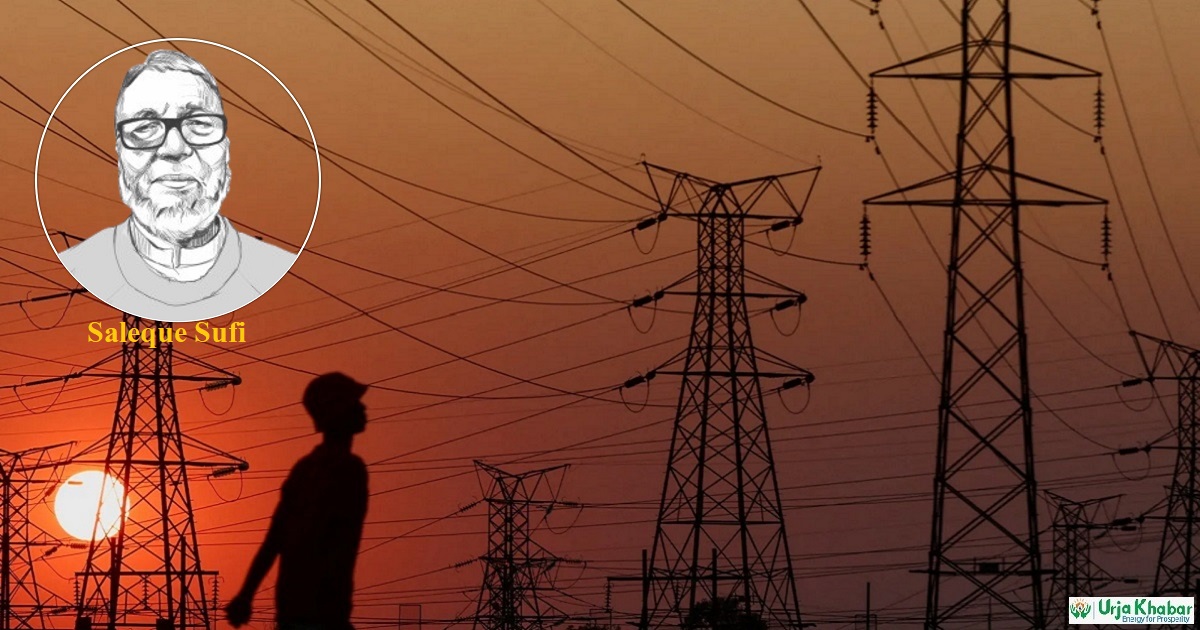
The prevailing energy crisis likely will deepen further in 2025 and 2026. The power and gas consumers will continue to suffer from supply shortages. Many small to medium-capacity industries may have to close business. Many people may lose their jobs. Local and foreign investment may slow down. The economy may suffer. There is no need to reinvent the wheel. The present interim government cannot turn around in the shortest possible time. It can stabilize the situation by making pragmatic plans and creating a congenial disciplined environment for seamless growth and development of the sector. Ill-motivated flawed planning and poor governance leading to an absence of transparency and accountability have created a weak and sick energy and power sector.
The previous government took pride in bringing the country under a power supply grid. They boasted of achieving over 30,000MW grid and non-grid power generation capacity. However, for various reasons, from lack of primary fuel supply to transmission and distribution constraints and cash crisis for purchasing primary fuel, the power supply chain struggles to generate and supply consistently required power (less than 50% of installed capacity).

Substantial superior quality coal resources remain unexploited and significant petroleum resources onshore and offshore could not be explored. Bangladesh does not have the resources to purchase primary fuel from the volatile global market. State-owned power and energy enterprises cannot meet the financial obligations to fuel and power suppliers for cash crises. The interim government has inherited all the above.
The government in limited time has taken some major steps in disciplining the sector. But in a short time, it cannot increase power generation to the expected level nor can increase fuel supply to meet the actual present and emerging demand. But by planning and executing effective measures of austerity and efficiency and eliminating system loss, theft, and pilferages, the government can create comfort. For all these, the government requires bringing major changes in the governance process, placing the right people in the right places, and ensuring accountability and transparency in all transactions.

The immediate task is making a short-term contingency plan for managing the impending crisis of 2025 and 2026. During the dry season (irrigation season), Ramadan and summer will increase power demand to 16,500- 17,000MW from the average of 9,500-10,000MW now. There is no way the gas and LNG supply can be increased. The government will struggle to arrange money to purchase primary fuel and make payments for power purchases from private sector producers and exporters of India. This interim government is likely to stay in office until June 2026 as it announced to hold a general election by then. The government must make and execute contingency plans to manage the crisis until then.
Present Situation of Power and Energy The present installed generation capacity of grid power is 27,840MW. State-owned companies can generate 11,821MW (42%), private companies can contribute 10,885MW (39%), joint venture companies 2,478MW (9%), and import 2,656MW (10%). As per the BPDB website, 2,800MW captive generation, 549MW off-grid renewables, and 5MW off-grid HFO make a total generation capacity of 31,194 MW. However, according to BERC, captive generation capacity exceeds 4,000MW.
The real challenge is ensuring a sustainable supply of fuel for power generation. Gas supply is a major problem. Gas-based power plants need about 2,000 MMCFD gas to utilize 90% of the generation capacity. Due to production limitations, Petrobangla can supply only 1000-1100 MMCFD at summer peak. It is possible to generate 8,500-9,000MW of electricity with this amount of gas, leaving 2,500-3,000MW generation capacity idle. BPDB follows a meritbased generation policy. Recently, three highly fuel-efficient power plants have been constructed in the Meghnaghat area.
These plants, apart from gas shortage, have gas supply infrastructure constraints. Until the under-construction Bakhrabad–Shiddhirganj 42-inch diameter transmission pipeline gets ready for operation, TGTDCL will not be able to economize gas supply for power generation. On the other hand, there is no possibility of increasing gas production from domestic gas fields over the short term. It is also not possible to increase LNG imports. In such a situation, the government has hardly any option but to ensure the generation of at least 4,500-5,000MW coal-based power consistently. For this, the necessary foreign currency must be provided to coal power companies for importing coal.
The government must restrict all social events during the day, and none should be allowed for marriage and other social ceremonies past evening. Shopping hours on weekdays can be restricted to 8 pm. Shop owners may be given some alternate incentives to cover their business losses if any.
Coal plants at Payra have no operational issues, but the Rampal power plant suffers from frequent technical glitches. Matarbari Power Plant had issues with coal import and Bashkhali Power Plant had contractual issues that the interim government must deal with. Another area of concern is payment to Adani Group and other export companies for the power they supply. During 2025 and 2026, Bangladesh will be required to import at least 2,000MW consistently. Then comes liquid fuel-based power generation.
The government should gradually phase out dirty liquid fuel-based power generation. However, the situation demands keeping at least 3,500-4,000MW liquid fuel-based generation for peak shaving. For this, the government must ensure that the IPPs get payment for the power supplied and get government assistance for opening LCs for fuel import.
Contingency Measures
Intensive irrigation season from the middle of February 2025 will increase power demand by 2,500-3,000MW. Ramadan followed by summer will peak power demand to 16,500- 17,000MW. In the present and emerging situation, it is highly unlikely that it will be possible to generate consistently over 15,000- 15,500MW. The government is trying desperately to bring the first unit of the Rooppur nuclear power plant into operation. We are not sure whether infrastructures have been developed yet for the seamless evacuation of power to the national grid.
The other contingency measure can be effective demandside management. During the summer peak, austerity measures must be introduced at all segments of the power supply chain. Cooling and lighting loads are the major sources of demand. Use of air conditioners must be rationalized in all government offices and organizations capping the colling to 25 degrees Celsius. The government must restrict all social events during the day, and none should be allowed for marriage and other social ceremonies past evening. Shopping hours on weekdays can be restricted to 8 pm. Shop owners may be given some alternate incentives to cover their business losses if any.
Industries use gas for captive power generation. BPDB may explore whether the excess power from the gas-based captive power plants can be evacuated to the grid.
Petrobangla is implementing a host of exploration and development projects. These projects must be treated as top-priority national projects, and all must ensure that the projects are implemented within schedule. BAPEX must be utilized to its capacity. International companies may not risk investment in the present political uncertainty as evidenced by no response to the Petrobangla PSC bidding round and poor response to bids for LNG import from spot market.
The government must also review relieving taxes and duties from the import of solar panels, inverters, and batteries. Given proper incentives, by the end of 2025 at least 1,000MW solar power can be made available to the grid from rooftop installations.
Even after taking all the initiatives, load-shedding during the summer peak cannot be avoided. Giving priority to power and energy supply to industries, planned load-shedding may be done with prior announcement. Petrobangla carrying out combing operations against unauthorized use of gas must endeavor to save 100-150 MMCFD gas and divert this for power generation.
All must realize that ensuring power and energy supply security is a national priority. Not only the government but also every sensible citizen has the responsibility to ensure the optimum utilization of electricity and gas. All must do their best for efficient use and avoid wastage. There is no magic formula for solving the power and energy crisis that is inevitable now.
We may conclude by mentioning that energy efficiency and energy conservation are the keys. In the short time, it is not possible to increase fuel supply at a desired level from local sources or imports. All have to realize that cutting the coat according to the cloth is the only way to go now.
We have taken this story from Enegy and Power Magazine (6th January 2025) publish from Bangladesh, which is very popular magazine across the country.
The article is taken from Energy and Power Magazine, a popular publication in Bangladesh, dated January 6, 2025.
